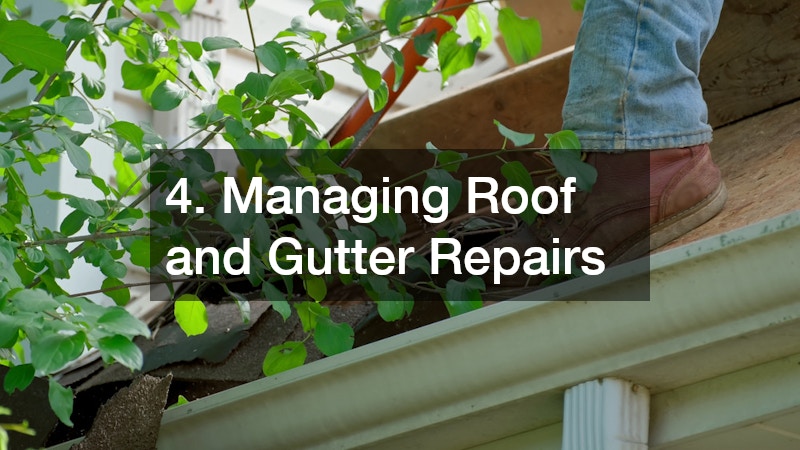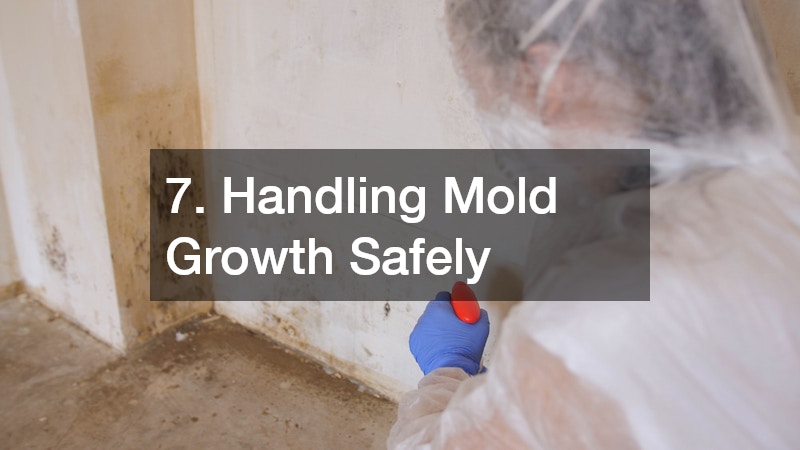Severe storms can strike without warning, leaving behind a path of destruction that tests a homeowner’s patience, finances, and sense of security. Whether it’s strong winds ripping away shingles, heavy rainfall flooding basements, or hail pummeling siding, the damage often goes deeper than what’s visible. After the initial shock, homeowners face a crucial question: should they repair, replace, or remodel? The answer depends on the type and extent of the damage, as well as the long-term goals for the property. Making the right call requires knowledge, careful evaluation, and professional input to prevent temporary fixes from becoming future problems.
When damage hits multiple areas of the home—roofing, foundation, and interior finishes—decisions become even more complicated. While patching small issues may seem cost-effective in the short term, neglecting underlying damage can lead to mold, structural weakness, and higher costs later. It’s also important to understand how weather patterns, soil conditions, and previous repairs can influence how your home responds to severe weather. By working with licensed professionals and reviewing long-term maintenance records, you can better predict how much work is needed and what type of restoration is most practical. This article provides a comprehensive guide to assessing your home after a storm, working with insurance, choosing the right professionals, and protecting your home from future damage. Each section offers actionable insight to help you rebuild with confidence and durability.
1. Assessing the Full Extent of Damage

The first step after any major storm is a thorough inspection of your property. Take time to look for visible signs of damage, such as missing shingles, broken gutters, cracked windows, or standing water near the foundation. Walk around your home safely, noting anything out of place. Inside, check ceilings and walls for leaks, and look for damp carpets or bubbling paint—early indicators that moisture has entered the structure. Document everything with photos or videos, as these records will prove valuable when filing an insurance claim. Even if everything appears intact, hidden issues can worsen over time if left unchecked.
To uncover less obvious problems, it’s smart to schedule professional evaluations. Specialists use tools like moisture meters and thermal cameras to detect water behind walls or in subflooring. Structural shifts or widening cracks may mean foundation repair is needed before surface repairs begin. In addition, pay attention to how doors and windows operate; if they suddenly stick or misalign, that may signal subtle shifting. Early assessments can prevent unnecessary replacements and give you a clear understanding of what’s required for long-term safety. By investing in a detailed inspection, homeowners gain peace of mind and can prioritize their repair budget intelligently rather than reacting to future surprises.
2. Navigating Your Homeowners Insurance Policy
Once your home has been assessed, contact your insurance company promptly. The claims process often feels complicated, especially when you’re dealing with multiple types of damage. Start by providing documentation and inspection reports, along with estimates from contractors. Most homeowners insurance policies cover weather-related incidents like hail damage, wind damage, or water intrusion from storms, but certain exclusions may apply. The faster you report the damage, the better your chances of getting timely assistance and avoiding claim denials.
Maintain detailed records of all communications with your homeowners insurance and contractors. Ask questions about coverage limits and what documentation the adjuster needs. If the process seems overwhelming, consider consulting a trusted contractor or public adjuster to advocate for fair compensation. Keep receipts for temporary measures such as tarping the roof or pumping out water; these are often reimbursable expenses. It’s also helpful to get at least two repair estimates to confirm fair market pricing. By understanding your policy thoroughly, you can plan your restoration budget effectively, prioritize urgent repairs, and avoid financial surprises down the road. Staying organized through each step builds confidence and prevents disputes during the reimbursement phase.
3. Knowing When to Repair, Replace, or Remodel
Choosing between repair, replacement, or remodeling depends on the damage severity and your home’s age. Repairs work best for smaller issues, like fixing a leaky roof section or patching damaged drywall. Replacement is more appropriate when a component, such as siding or flooring, has deteriorated beyond recovery. Remodeling allows you to take advantage of the restoration process by upgrading outdated spaces or materials. For instance, replacing damaged walls could be an opportunity to improve insulation or layout for long-term comfort.
Professional input is invaluable here. Reputable storm damage repair services evaluate each area, identifying where repairs suffice and where full replacements are more cost-effective. They can also advise on structural safety, local building codes, and design improvements if remodeling makes sense. You may even discover that remodeling your kitchen or living space after repairs can boost property value while improving comfort. By carefully comparing costs, timelines, and potential benefits, homeowners can make choices that improve both durability and livability. This balance of practicality and foresight helps ensure every decision contributes to the long-term success of the home.
4. Managing Roof and Gutter Repairs

Roofs and gutters often take the brunt of storm damage. Missing shingles, dented flashing, or broken downspouts can allow water to penetrate your home’s structure. After a major weather event, have your roof professionally inspected to spot both visible and hidden issues. Delaying repairs can lead to costly leaks and interior damage. A qualified roofing company can replace damaged materials, reseal joints, and ensure your roof meets safety standards for future storms.
Gutters play a key role in directing water away from your home’s foundation. If they’re clogged, bent, or detached, hire a local gutter company to restore proper drainage. Installing gutter guards or downspout extensions can prevent overflow and protect landscaping. Homeowners should also check fascia boards for rot or decay, which can weaken gutter attachments. Maintaining these systems not only keeps your roof and foundation safe but also preserves the overall value of your property. Regular cleaning twice a year and after major storms can prevent expensive drainage issues that often go unnoticed until significant erosion or interior flooding occurs.
5. Addressing Water Damage Properly
Even minor leaks can cause extensive issues over time, from warped floors to weakened drywall. After a storm, inspect for damp areas and musty odors—signs of hidden moisture. Standing water, even in small amounts, can seep into porous materials, compromising structural integrity. Quick action is critical to prevent long-term deterioration.
Instead of attempting cleanup yourself, hire a professional water damage company to handle extraction, drying, and sanitization. These experts use industrial-grade dehumidifiers and moisture meters to ensure every trace of water is removed. They can also assess whether flooring, insulation, or drywall needs to be replaced. Partnering with specialists reduces the risk of hidden mold and guarantees the repairs that follow have a dry, stable foundation. Additionally, having professionals handle cleanup protects you from potential electrical hazards and health risks. Water restoration teams often coordinate with insurance providers to document the process for reimbursement, making them a valuable ally in recovery efforts.
6. Preventing Lingering Moisture Problems
Storm-related flooding often leaves moisture trapped beneath surfaces where it can quietly destroy materials. Even after visible water is removed, damp subfloors or insulation can harbor mold and bacteria. Regular inspections help detect recurring dampness before it spreads. Look for warping, peeling paint, or persistent odors in affected areas.
A professional water damage service can verify moisture levels and apply antimicrobial treatments to safeguard your home. Dehumidifying the area for several days, even after the water appears gone, is often necessary to ensure stability. Homeowners should also consider waterproofing basements or crawl spaces and improving yard drainage to prevent future issues. Installing a sump pump or grading soil to divert runoff can make a dramatic difference in storm resilience. Preventing moisture accumulation protects both your home’s structure and the health of its occupants while reducing future repair costs.
7. Handling Mold Growth Safely

Mold often develops within 24 to 48 hours after water exposure, making quick action essential. Its spores can cause respiratory problems, especially in children or those with allergies. Mold tends to grow in hidden corners—behind drywall, under flooring, and inside HVAC systems—so visual inspections alone aren’t enough. If you suspect contamination, avoid disturbing the area until professionals arrive.
Calling a certified mold removal service ensures the job is handled safely and thoroughly. These specialists isolate affected zones, use air filtration systems to capture spores, and disinfect all surfaces to prevent regrowth. After remediation, maintaining low humidity levels and proper ventilation helps keep your home mold-free. Homeowners should also replace any porous materials, like carpeting or insulation, that have been compromised. Prompt attention not only preserves indoor air quality but also protects your investment from expensive structural repairs later. Consider periodic inspections in humid months to ensure your home remains healthy and secure.
8. Strengthening Structural Stability
Storms can compromise the integrity of your home in ways that aren’t immediately visible. Shifting soil, pooling water, and strong winds can weaken load-bearing components or cause subtle settling. Over time, these issues can lead to uneven floors, sticking doors, and widening cracks in walls. Ignoring these signs risks further structural movement and more expensive damage.
If you notice such symptoms, consult professionals who specialize in foundation repair. They can assess whether reinforcement, pier installation, or leveling is required to restore stability. Contractors may also evaluate drainage systems, as poor runoff often contributes to soil erosion beneath foundations. Addressing foundational issues promptly ensures other repairs remain effective and that your home stands strong for years to come. Investing in professional stabilization not only restores safety but also increases your property’s resale value and peace of mind during future storms.
9. Taking Advantage of the Restoration Opportunity
Recovering from storm damage is stressful, but it also offers a chance to upgrade and improve your living space. Many homeowners use this period to enhance functionality, increase energy efficiency, or modernize outdated rooms. Remodeling after repairs can make your home more comfortable and better equipped to handle future storms.
Collaborate with experienced contractors who understand both structural safety and design. During home remodeling, consider durable materials such as impact-resistant windows, moisture-resistant drywall, and energy-efficient insulation. You might also explore open layouts that improve ventilation and natural lighting. Remodeling can turn adversity into opportunity, boosting your home’s appeal and value while reducing long-term maintenance needs. With thoughtful planning, your post-storm renovation can become one of the smartest investments you’ll ever make in your property.
10. Choosing Reliable Professionals for the Job

Restoring your home requires coordination among various experts—roofers, foundation specialists, mold remediators, and more. Selecting trustworthy contractors is key to successful recovery. Research local companies, read reviews, and request multiple quotes before making a decision. The cheapest option isn’t always the most reliable, especially when safety is on the line.
Look for contractors who are licensed, insured, and experienced in storm damage repair services. A professional team will communicate clearly, provide detailed estimates, and stand behind their work with warranties. Ask about project timelines, cleanup procedures, and follow-up support. By hiring the right professionals, you ensure your repairs, replacements, and remodeling efforts lead to a stronger, safer, and more beautiful home. Trusted partnerships with restoration experts help homeowners feel confident that every dollar spent contributes to lasting protection and peace of mind.
Storm damage can be devastating, but it doesn’t have to define the future of your home. By taking prompt, informed action, you can repair what’s broken, replace what’s beyond saving, and remodel to make your home stronger than ever. Addressing immediate needs—such as foundation repair, roof restoration, and moisture control—prevents further complications, while long-term planning and professional assistance ensure lasting results.
Homeowners who collaborate with trusted experts like a roofing company, mold removal service, water damage service, and local gutter company benefit from lasting protection and improved property value. With guidance from your homeowners’ insurance provider and skilled contractors, the path to recovery becomes clearer. By making the right choices today, you can transform storm recovery into an opportunity to fortify and enhance the place you call home—ensuring it remains safe, strong, and beautiful for years to come.
